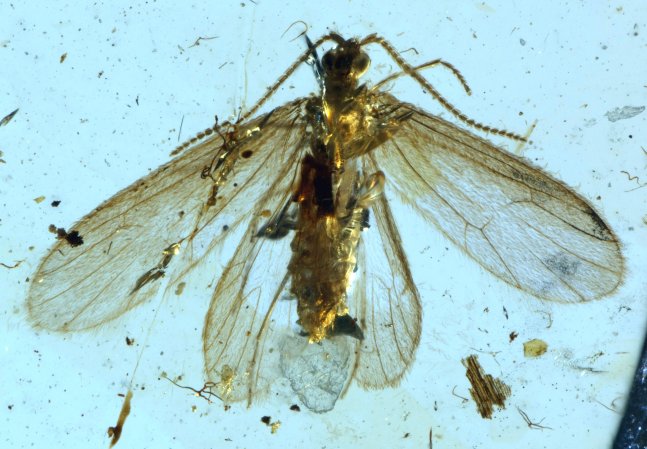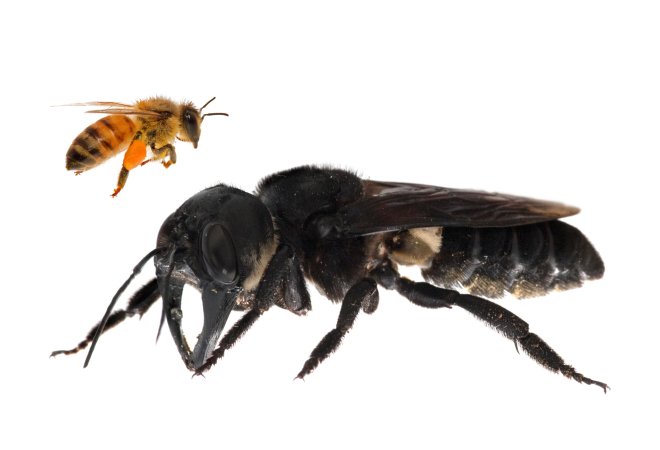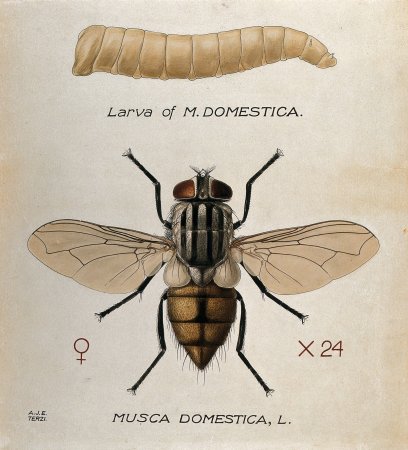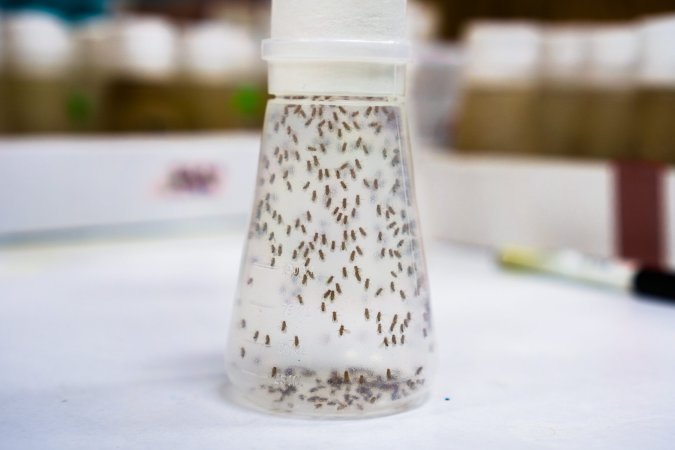

Unlike many vibrant insects, who rely on pigment alone for their colors, a butterfly’s radiant shimmer has a special source: The precise structure and arrangement of microscopic scales on its wings. Those small but mighty scales provide iridescence as well as maintenance of body temperature and protection against the elements.
For the first time, MIT scientists have engineered a way to watch and record those microscopic scales as they grow and tile themselves on a developing butterfly inside its chrysalis. The team raised painted lady butterflies, Vanessa cardui, waiting for the caterpillars to encase themselves in chrysalises. Once metamorphosis began, the team sliced into the cuticles of each chrysalis and covered the openings with glass coverslips, allowing them to view developing wings through that window. The team recorded wing scale development from start to finish and published their findings in Proceedings of the National Academy of Sciences.
Butterfly scales are complex microstructures, but most of what is known about their formation is based on still images of developing and mature butterfly wings. The team knew they needed a clearer, more comprehensive view of butterfly wing development to understand how the scales work.
“Previous studies provide compelling snapshots at select stages of development; unfortunately, they don’t reveal the continuous timeline and sequence of what happens as scale structures grow,” co-author and mechanical engineer Matthias Kolle said in a statement. “We needed to see more to start understanding it better.”
[Related: A beginner’s guide to butterfly watching]
To visualize that continuous sequence, the team used speckle-correlation reflection phase microscopy, a light-based imaging technique that applies a dispersed field of light speckles over a target. Concentrated wide beams of light can damage the delicate butterfly wing cells—but this method creates detailed, three-dimensional maps of the scales without that residual damage. Co-author and biological engineer Peter So compared speckle field microscopy to “thousands of fireflies that generate a field of illumination points.”
Thanks to their high resolution imaging, the scientists found that butterfly scale cells quickly lined up in rows within days of the chrysalis forming. The cells developed into cover scales, which lie on top of the wing, or ground scales, which grow underneath. As the cells continued to grow, the research team expected each cell to wrinkle and compress, like an accordion. Instead, each cell developed a sort of waviness, like the corrugation on a metal roof.

The authors hope to investigate the mechanism of that corrugation further, seeking to use butterfly scales as inspiration for the design of new materials. Butterfly scales have other fascinating properties such as water repellency and the ability to regulate temperature. Understanding scale formation, lead author and mechanical engineer Anthony McDougal said in a statement, could help “give both color and self-cleaning properties to automobiles and buildings. Now we can learn from butterflies’ structural control of these complex, micro-nanostructured materials.”























